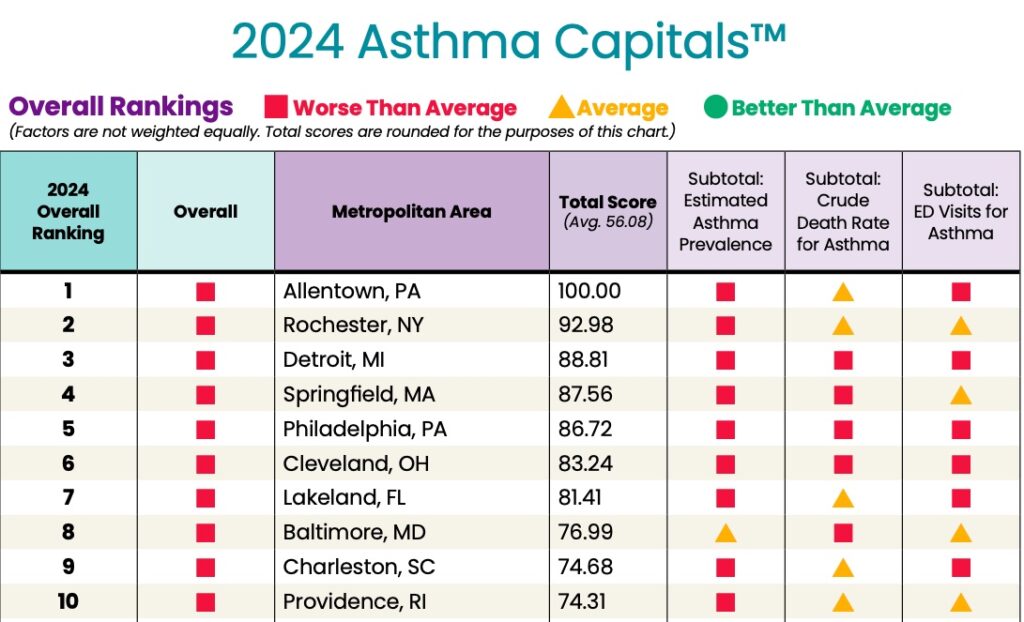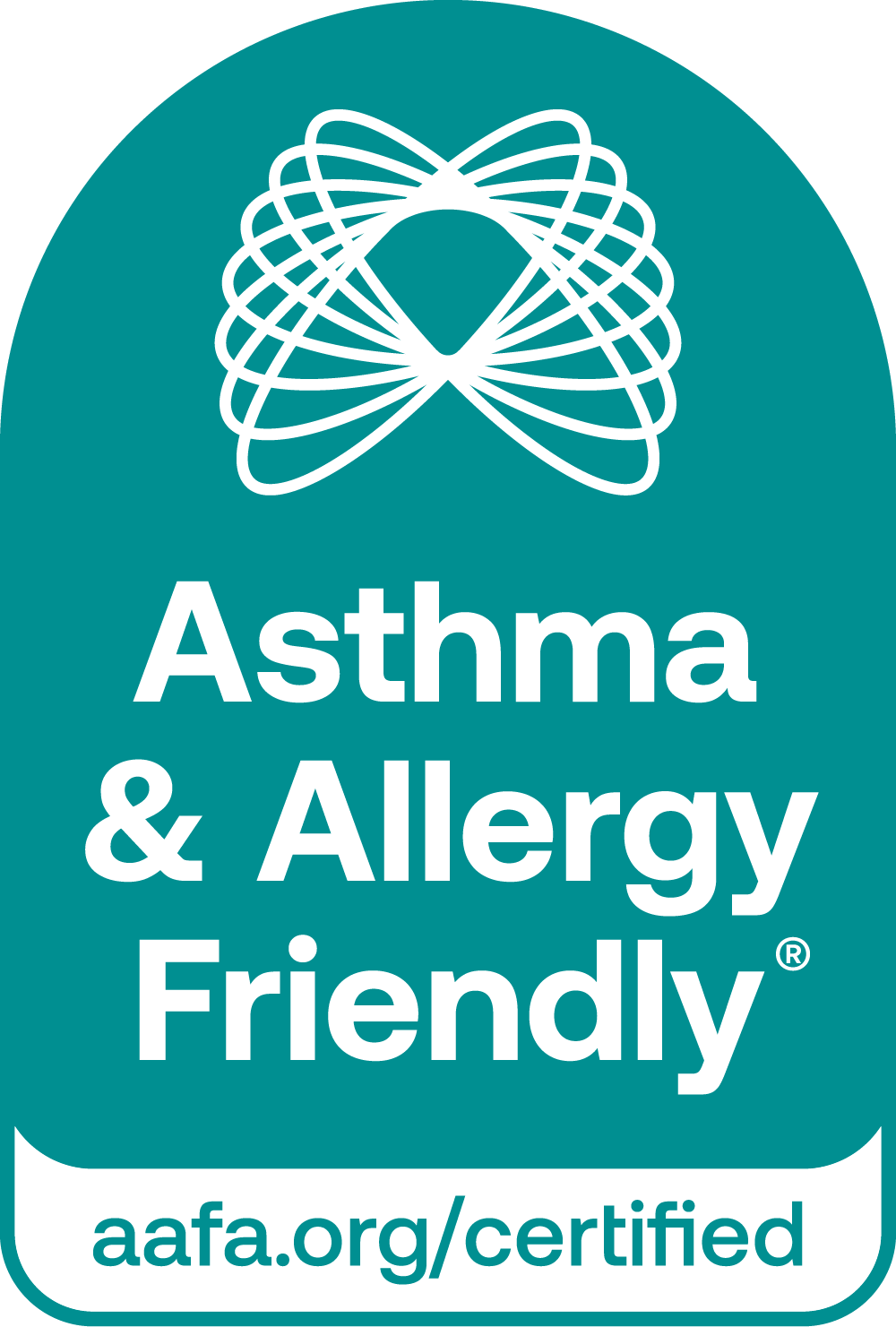 As the seasons change, so does the air we breathe. For the 81 million people in the US affected by allergic rhinitis caused by pollen allergy, the arrival of pollen can turn a pleasant spring day into a sneezing and watery-eyed nightmare. More seriously, pollen can trigger allergic asthma, which is especially challenging for children, as allergic asthma is most common in early childhood and decreases through adulthood.
As the seasons change, so does the air we breathe. For the 81 million people in the US affected by allergic rhinitis caused by pollen allergy, the arrival of pollen can turn a pleasant spring day into a sneezing and watery-eyed nightmare. More seriously, pollen can trigger allergic asthma, which is especially challenging for children, as allergic asthma is most common in early childhood and decreases through adulthood.
Pollen seasons vary across different regions of the US. Generally, tree pollen peaks in spring, grass pollen peaks in summer and early fall, and ragweed pollen dominates in the fall. However, due to climate change, pollen seasons have become more intense and longer. Research shows that, since 1990, pollen seasons start 20 days earlier, last 10 days longer, and contain 21% more pollen than they did 30 years ago. Warmer temperatures and higher levels of CO2 contribute to this shift, with studies indicating that urban areas often experience much higher pollen levels than rural areas.
 The 2024 Asthma Capitals™ Report from the Asthma and Allergy Foundation of America (AAFA) highlights how this extended pollen season correlates with aggravation of asthma outcomes in many US cities. In fact, AAFA’s report notes that cities already facing significant asthma challenges are further exacerbated by high pollen counts, which trigger asthma attacks and lead to more emergency department visits, especially during Asthma Peak Week in September. This is a time when high ragweed pollen levels, combined with other factors like wildfire-related air pollution and return to school, make managing asthma more difficult.
The 2024 Asthma Capitals™ Report from the Asthma and Allergy Foundation of America (AAFA) highlights how this extended pollen season correlates with aggravation of asthma outcomes in many US cities. In fact, AAFA’s report notes that cities already facing significant asthma challenges are further exacerbated by high pollen counts, which trigger asthma attacks and lead to more emergency department visits, especially during Asthma Peak Week in September. This is a time when high ragweed pollen levels, combined with other factors like wildfire-related air pollution and return to school, make managing asthma more difficult.
As a defense against pollen in the home, it is recommended that people with pollen allergies keep windows closed during pollen season or at peak pollen times. Alternatively, an air cleaning system with an effective filter for pollen can be used. However, both options can be inconvenient or expensive.
A Simple Solution: Window-Mounted Pollen Screens
There is a simple and effective solution that can make a world of difference—window-mounted pollen screens. These innovative screens not only help reduce pollen indoors but also allow for natural ventilation, are energy-efficient, versatile, and convenient. Given that we spend roughly 90% of our time indoors, these screens offer a way to improve indoor air quality (IAQ) without sacrificing comfort.
Shield Against Pollen
Window-mounted pollen screens act as a barrier to pollen particles and other potential pollutants, reducing the amount of pollen entering your living space and promoting healthier indoor air. According to AAFA’s 2024 Asthma Capitals™ Report, poor IAQ, exacerbated by pollen and other allergens, is a critical risk factor for asthma. These screens, with their fine mesh design, capture even the smallest pollen particles, providing a simple yet effective way to create a healthier indoor environment.
Effective pollen screens are ideally validated to ensure they:
- Can block various types of pollen,
- Can be easily cleaned of captured pollen to maintain long-term performance,
- Have minimal allergenic chemicals and volatile organic compounds (VOCs), as VOCs can irritate the eyes, respiratory tract, and cause other health issues.
Natural Ventilation and Energy Efficiency
In addition to blocking pollen, window-mounted screens allow for natural ventilation. Fresh air circulation is key to maintaining good IAQ, and these screens enable you to open your windows without worrying about allergens entering your home. This solution also supports energy efficiency, as it reduces reliance on air conditioning during warmer months, thus lowering energy consumption and minimizing your carbon footprint.
Pollen Screens are Versatile, Accessible, and Convenient
Window-mounted pollen screens are easy to install and remove, making them a convenient addition to any household. They are available in various sizes to fit different window types and are low-maintenance, only requiring occasional cleaning. Unlike heavy drapes or shutters, these screens do not obstruct views or block natural light, allowing you to enjoy the outdoors while keeping your home pollen-free.
Certification Standard for Window-Mounted Pollen Screens
In response to the growing issue of increasing pollen counts and rising pollen allergies, coupled with consumer demand for validated pollen screens, the Asthma & Allergy Friendly® Certification Program has developed a certification standard for window-mounted pollen screens. This new standard ensures that any pollen-blocking window screens that earn the Asthma & Allergy Friendly® Certification Mark must pass rigorous scientific testing. These screens are carefully evaluated to ensure they effectively block different types of pollen while maintaining the integrity of ventilation and air quality indoors, thus providing assurance to the consumer.
Conclusion
Window-mounted pollen screens offer a breath of fresh air in more ways than one. IAQ is crucial for managing asthma, and simple interventions like pollen screens can play a major role in reducing exposure to allergens. With the ability to shield against pollen, promote natural ventilation, and enhance energy efficiency, these cost-effective screens are a valuable lifestyle investment. Embrace the benefits today and experience a healthier, more comfortable living space.
